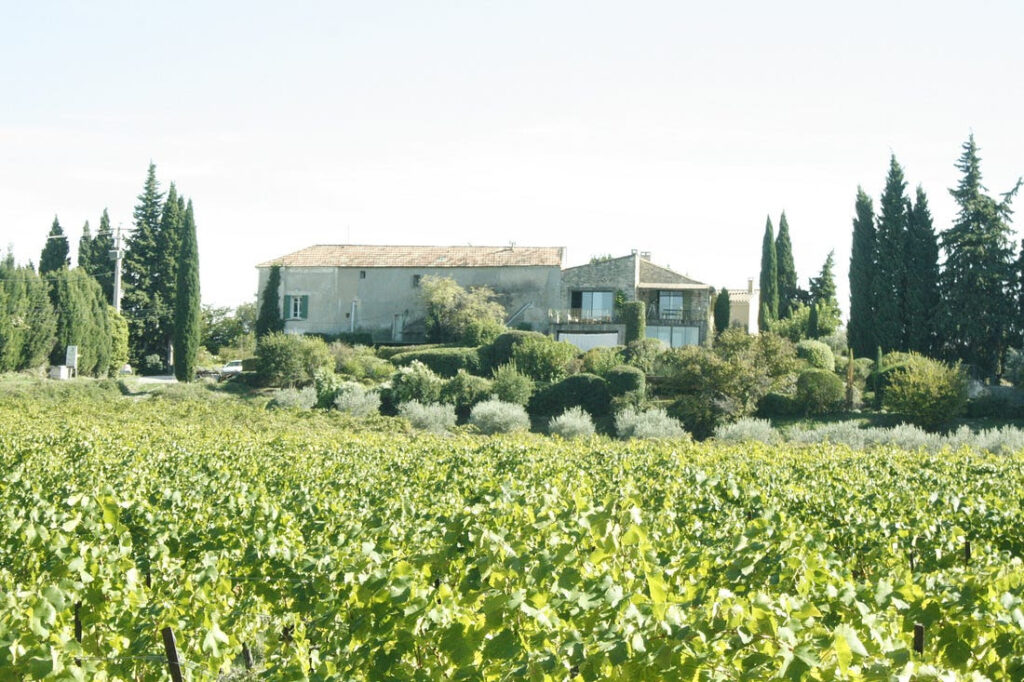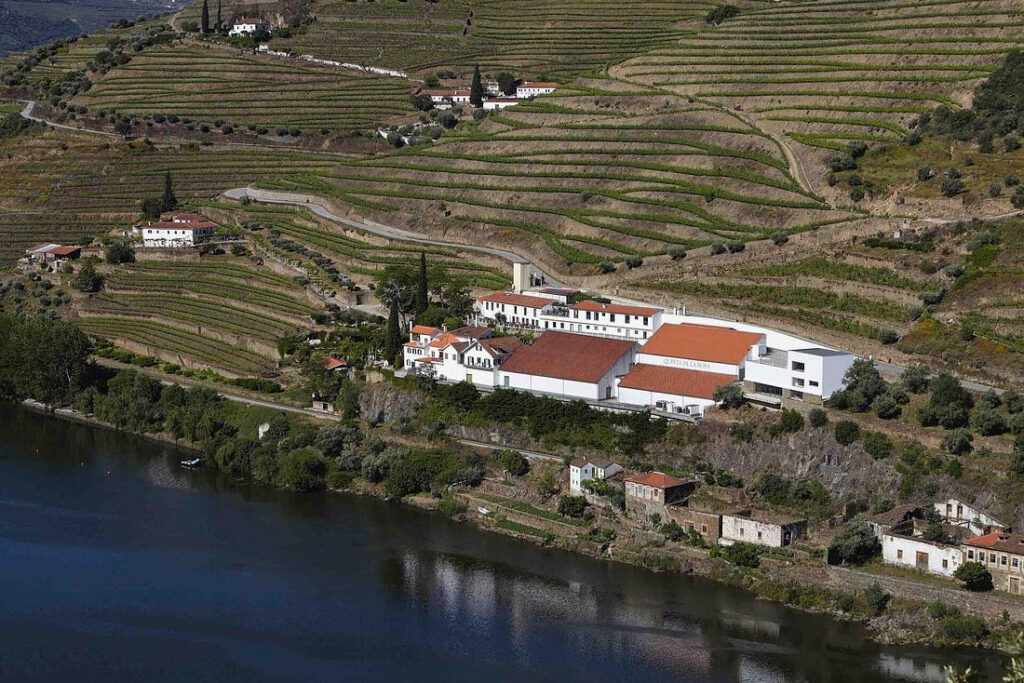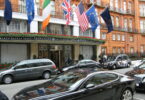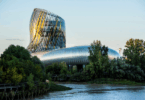What’s Hot in September’s Wines
Written by Giles MacDonogh
Posted in London on 03 October,2025
Britain was hot this summer. At least four times the sun came out and stayed out, the weather gauge climbed to 30C and above, and there was little or no rain. Out the back, the grapes on my solitary vine turned blue-black earlier than I have ever seen, but they had decided to spread their tendrils in the higher branches of a bay tree and I couldn’t reach them. I reckon the starlings scoffed the lot.
In the middle of the month, I went to the Domaine des Anges in the Ventoux. There were no grapes there either: they had harvested two weeks before, straight after the usual late August storm. By all report they were tiny, and concentrated. Where we had had 30C they had had 40C; when we had 35C, they had 45C. There won’t be much wine. Perhaps that is good news? The French have almost ceased to consume it, and in Britain fewer and fewer people can afford it after the government continued to enforce the previous regime’s greedy impositions.

It was still warm in Provence, mostly in the mid-thirties. It was a joy to see the last of the sun, as in Britain it has turned prematurely cold. Still, it is an ideal temperature for wine tasting.
My first tasting after the summer break was of wines from the Domaine Bournet Lapostolle in Chile. These are Chile’s grand cru wines (with prices to match) and very impressive they are too. We started with a 2024 rosé with a scent of elderflowers and a nice bracing acidity. Acidity was a welcome addition to a super 2023 Viognier too, although I could have done with less oak. A 2022 Grenache-Syrah-Mourvèdre Côte de Monsieur, I liked marginally less: I couldn’t see it holding its own against a top Châteauneuf-du-Pape. A straight Syrah, 2022 Clos du Lican was a beautiful colour. Again, there was quite a lot of oak. It was decidedly masculine, all shoulders and biceps – not a happy, waltzing Saint Joseph.
The hard core of the estate is made up of Carmenère and Cabernet. The 2023 Prelude was 50 percent Carmenère, 40 percent Cabernet and ten percent Merlot. I caught a whiff of elderflowers here too. It was chewy, powerful, needed time. The 2022 Petit Clos was 59 percent Carmenère, 33 percent Cabernet and ten percent Merlot. This was another pair of gloves (as they say): a striking colour, a lot more charm and an enormous length – a truly wonderful wine. The 2022 Clos Apalta was 68 percent Carmenère, 22 percent Cabernet and ten percent Merlot. Along with the Petit Clos, the best wine in the tasting, more feminine fruit and charm and waves of juiciness. I was hankering after a piece of mature cheddar but had to make do with a breadstick. The last wine, the pure Cabernet 2022 Lapostelle La Parcelle 8 was deep and chewy, big and promising, craving red meat and armed with almost unlimited power. There was some classic cassis fruit and a lot of acidity besides.
Lea & Sandeman is an excellent small London chain. Prices are quoted without VAT, which makes them look gentle. You need to add another 20% for the government in addition to Boris’s buccaneering overhaul of excise duty on the basis of alcoholic strength. Still, even at £40, the Christophe Mignon NV – Meunier Brut Nature champagne was lovely, with its nose of vanilla sugar and racy acidity. There isn’t much good champagne under forty quid.
Lea & Sandeman were always tip-top for Burgundy. The simple 2023 Chablis from Domaine Moreau-Naudet will work out under £30, but you’ll pay a lot more for a 2022 Chassagne-Montrachet from Domaine Fernand and Laurence Pillot – a lovely, proper, old-style white Burgundy. Also excellent was the 2022 Pouilly Fuissé Les Chataigniers from Domaine Barraud, ready now with its enchanting linden flower nose. Mentions in despatches for the Saint Véran Prélude from Domaine Frantz Chagnoleau and the 2022 Viré Clessé Emilian Gillet de Quintaine from the Domaine de la Bon Gran.
The 2024 Godello ‘MG’ Ribeira Sacra Pazo da Maga (forgive the MAGA), is a really good wine for around £15, as is the earthy, intense 2023 Riesling Trocken from Weingut Lehnert-Veit.
Among the reds, Lea & Sandeman had some stunning Cabernet Francs from the Loire, perhaps another instance of beneficial climate change? The 2021 Anjou Rouge Sur la Butte from the Château de Plaisance – sorrel and ash – is a lovely light red for under £20. There was also the 2023 Bourgeuil Côte 50 Domaine Yannick Amirault and the quite gamy 2022 Chinon Le Grézeaux from the Domaine Bernard Baudry.
Of the red Burgundy wines, I liked the 2020 Gevrey Chambertin Les Crais from the Domaine Huguenot best for its interesting complexity. The 2019 Côte Rôtie La Germine from the Domaine Benjamin et David Duclaux was sensational. There was also a lovely, perfumed 2023 Nebbiolo Colline Novaresi Le Piane for under £20. I was impressed too by the 2021 Acústic Vinyes Velles Nobles from Acústic Celler with its cool fruit.
Lastly, the reliable house of Thorman Hunt presented some novelties. Again, the prices do not include VAT, so I have slapped on 20%.
Sparkling wines first, and an excellent Crémant d’Alsace from Bruno Sorg in Eguisheim for around £20. Sorg also produced a very good 2023 Gewürztraminer. Of the champagnes, two stood out: Gallimard from Les Riceys in the deep south and Paul Déthune in Ambonnay on the Montagne. Naturally, the Gallimard is better value. There were more enchanting linden blossoms from the 2023 Château de Bonnezeaux La Montagne.
Yves Cuilleron seems to redeem the northern Rhone: excellent 2022 Saint Péray Biousse, absolutely classic 2023 Condrieu Les Chaillets and a dancing Saint Joseph Pierres Sèches, like that German red-berry summer pudding, Rote Grütze! The 2022 Saint Joseph La Gloriette from Lionel Faury was also great. It seems to me that Saint Joseph has taken over from Crozes Hermitage, which has become too ponderous. I miss the smell of peonies and carnations, although I liked the 2020 Crozes Hermitage Cornirets from Laurent Fayolle and the 2018 Côte Rôtie from Jean-Luc Jamet. It was a gem, with its dense, opulent fruit.

Italy is often the source of interesting wines now. For about a tenner there was a 2024 Grillo Bio Terre Siciliane from the Cantine Paolini in Marsala that was simply lovely. From quite the other end of Italy, there was a 2022 Dolcetto d’Alba from the Azienda Roberto Sarotto and a 2023 Barbera d’Asti from Agostino Pavia; but best of all, a truffly 2017 Barolo Bricco Cogni, La Morra from Michele Reverdito. And returning to the south, a 2022 Vigneti di Bruma Aglianico Beneventano from La Rivolta in Taburno that reeked of mulberries.
After a superbly fruity 2023 Maury from the Domaine Pouderoux that cried out for a chocolate pudding, I decided to taste the wines of my old friend Sophia Bergqvist at Quinta La Rosa in the Douro Valley. Following a good 2023 white and a rather-too-clarety 2021 red Val do Inferno, I launched into the ports. There was an excellent 2012 Colheita, mid-way between a late-bottled vintage and tawny, but the best of all was the 20-year-old tawny, a gorgeous confection of nuts and cream. The 2015 vintage was good too, but sadly not half as special as the 1970 Dow we drank at the sunny Domaine des Anges.
Giles MacDonogh’s Substack is free today. But if you enjoyed this post, you can tell Giles MacDonogh’s Substack that their writing is valuable by pledging a future subscription. You won’t be charged unless they enable payments.







